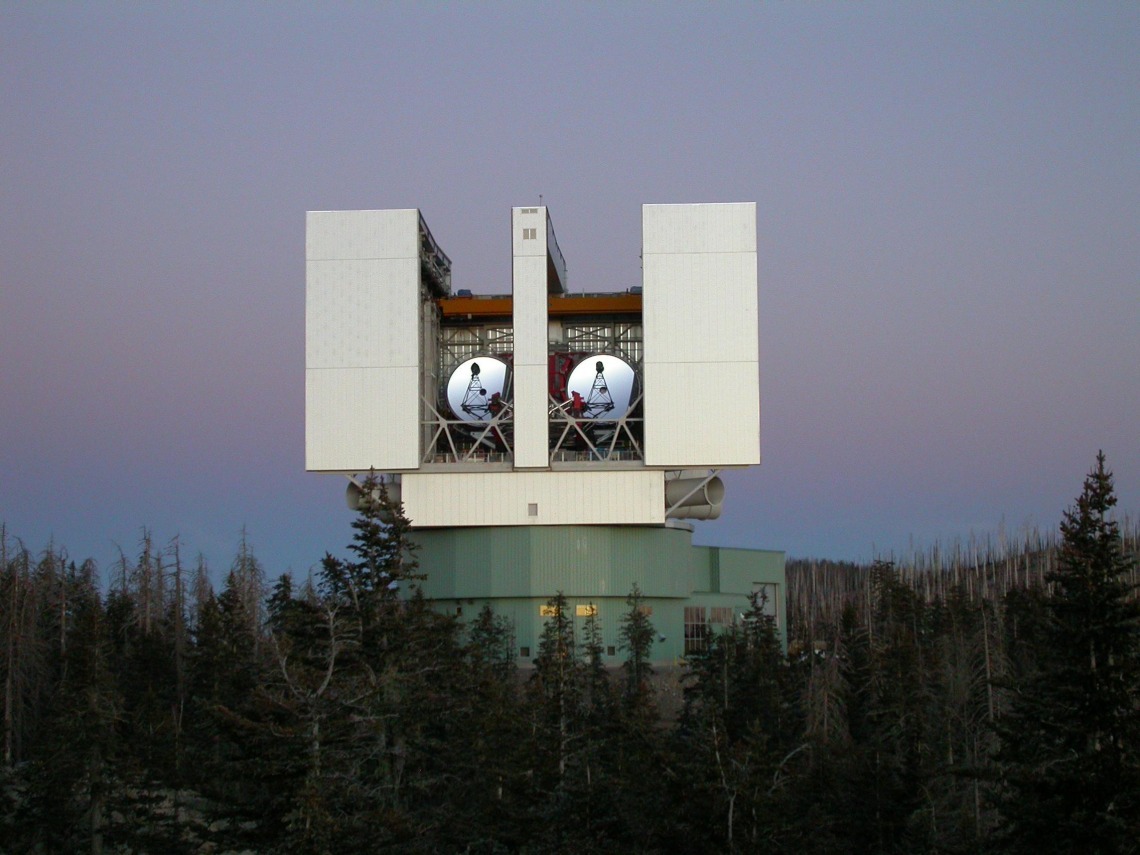Glimpses of a volcanic world: New LBT images of Jupiter's moon Io rival those from spacecraft

The Steward Observatory-managed Large Binocular Telescope on Mount Graham is the only one of its kind, with two 27-foot mirrors mounted side by side. A powerful adaptive optics system compensates for blurring introduced by atmospheric turbulence, making it one of the most powerful Earth-based observatories in the world.
New images of Jupiter's volcano-studded moon Io, taken by the Large Binocular Telescope on Mount Graham in Arizona, offer the highest resolution of Io ever achieved with an Earth-based instrument. The observations were made possible by a new high-contrast optical imaging instrument, dubbed SHARK-VIS, and the telescope's adaptive optics system, which compensates for the blurring induced by atmospheric turbulence.
The images, to be published in the journal Geophysical Research Letters, reveal surface features as small as 50 miles across, a spatial resolution that until now had been achievable only with spacecraft sent to Jupiter. This is equivalent to taking a picture of a dime-sized object from 100 miles away, according to the research team. SHARK-VIS allowed the researchers to identify a major resurfacing event around Pele, one of Io's most prominent volcanoes. According to the paper's first author, Al Conrad, the eruptions on Io, the most volcanically active body in the solar system, dwarf their contemporaries on Earth.
"Io, therefore, presents a unique opportunity to learn about the mighty eruptions that helped shape the surfaces of the Earth and the moon in their distant pasts," said Conrad, associate staff scientist at the Large Binocular Telescope Observatory. The Large Binocular Telescope, or LBT, is part of Mount Graham International Observatory, a division of the University of Arizona Steward Observatory.
Conrad added that studies like this one will help researchers understand why some worlds in the solar system are volcanic but not others. They also may someday shed light on volcanic worlds in exoplanet systems around nearby stars.

